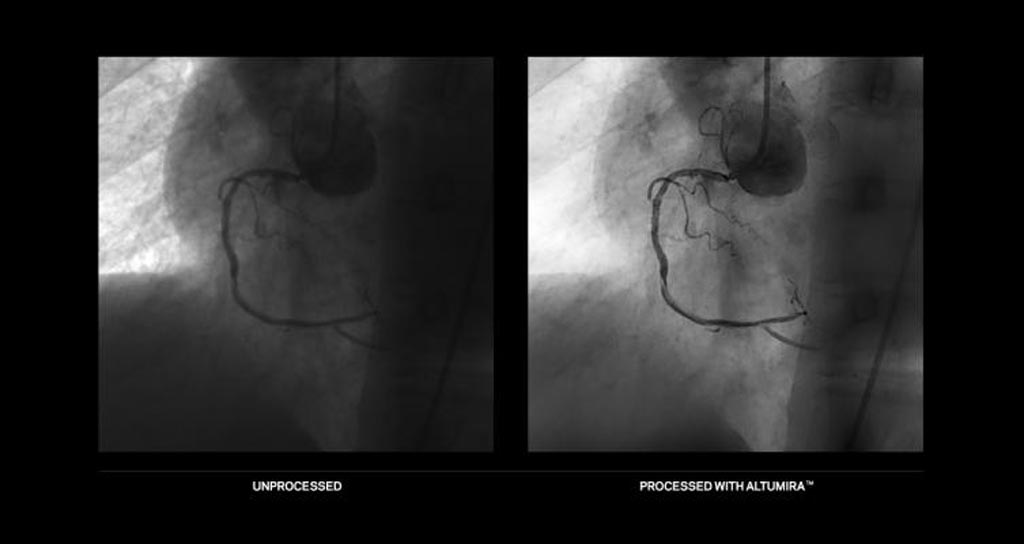AI-Powered Algorithm Enhances Digital Radiography Images
By MedImaging International staff writers
Posted on 27 Nov 2018
An integration of deep learning technology and digital radiography (DR) helps clinicians accurately interpret medical imaging, leading the way to better diagnoses and improved patient care.Posted on 27 Nov 2018
The ContextVision (Stockholm, Sweden) Altumira software has been specially designed to meet the demanding needs of DR by providing greater contrast and resolution in parallel with intelligent noise suppression and harmonized intensity levels. The software has been designed for all DR systems, from plain X-ray to advanced angiography systems, including low-dose fluoroscopy and high-quality angiography sequences.

Image: Machine learning can help improve digital x-ray images (Photo courtesy of ContextVision).
By using artificial intelligence (AI), optimal image quality can be achieved even with varying conditions, such as different dose exposures and different anatomies for both static and dynamic imaging. Altumira addresses significant challenges regarding durability and high image quality, including varying exposure conditions between patients; a wide variety of image characteristics and requirements for all types of anatomies; and varying dose and intensity levels, as well as organs and collimators in motion in dynamic sequences.
“This new product has been designed for X-ray systems that can be used for both static and dynamic imaging. These combined systems are increasingly being used in healthcare and a growing segment,” said Anita Tollstadius, CEO of ContextVision. “Our customers can now meet the demanding needs of digital radiography today, by handling all types of variations within and between images and sequences for both plain and dynamic digital radiography.”
“ContextVision’s success is built on extensive technological and application knowledge paired with a broad technology platform,” said Fredrik Palm, vice president of OEM business at ContextVision. “Deep learning is a natural fit, and we’ve now incorporated it as a core technology. We are relentless in our pursuit of R&D and product development to continuously spearhead the medical image processing and image analysis field with invaluable products.”
Deep learning is part of a broader family of AI machine learning methods based on learning data representations, as opposed to task specific algorithms. It involves artificial neural network (ANN) algorithms that use a cascade of many layers of nonlinear processing units for feature extraction and transformation, with each successive layer using the output from the previous layer as input to form a hierarchical representation.














